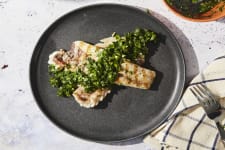This past fall, the Anchorage Museum wound down a nearly yearlong exhibition, "Extra Tough: Women of the North," an incredible and expansive show that highlighted the stories and contributions of Northerly women through art, artifacts and history.
I didn’t have the opportunity to see “Extra Tough” in person, as Anchorage is about a 4-hour drive from our Homer home base, but I did get to experience it from afar via the exhibition’s home page, and through their social media project, #ExtraToughWomenAK, a digital archive of the most visionary, courageous and innovative women from the North.
Some women, like the late Ahtna Athabaskan Katie John, are well-known for their high-profile contributions to the region’s identity. John was the plaintiff in a decades-long legal battle over subsistence fishing rights, a case that was integral in protecting the traditions and livelihoods of rural and Indigenous Alaskans who practice a subsistence lifestyle. The State of Alaska honors her each year on May 31st: “Katie John Day.”
There are also the “Alaskeros,” Filipina immigrants who came to Alaska in the early 20th century following the end of the Spanish-American War. Alaskeros found seasonal work at canneries, where they were subjected to grueling shifts processing salmon. The Alaskero community eventually came to dominate the industry, and many decided to call Alaska home. Today, the vibrant Filipino community is the state’s biggest immigrant minority group.
But for more than a handful of the women included in the campaign, their biographies are followed by this note: "Like many of the women we’ve profiled in our #ExtraToughWomenAK series, information on _____ is difficult to find through standard research methods. Her amazing work and story was brought to our attention by a community member."
In other words, because the historical record for these women was so lacking — and in some cases completely undocumented — the Anchorage Museum had to lean heavily on information sourced from the public. Weaving together stories and images shared by family members, neighbors, and acquaintances, the project has helped to piece together not only the biographies of these women, but also to reveal a richer tapestry of the North.
This Women’s History Month, I find myself thinking back to these gaps in the historical record, about all the women whose stories never made it to the canon of Alaska and beyond. I am convinced that we have the power and even the duty to tell the stories of women who have been overlooked by our industries, our communities, our history books — because if we don't, who will?
Though the exhibition is over, I invite you to learn a little more about Alaska’s culture, its values, and its history through the profiles of the amazing women who were included in “Extra Tough.” And if you have any of your own stories to share, please send them our way!
Live Wild,
Monica
Pictured above: Commercial fishers aboard their vessel in Prince William Sound in 2019, just one snapshot from documentary photographer Ash Adam’s collection Strong at Sea, which celebrates the contributions and experiences of the women of Alaska’s commercial fishing fleet.






